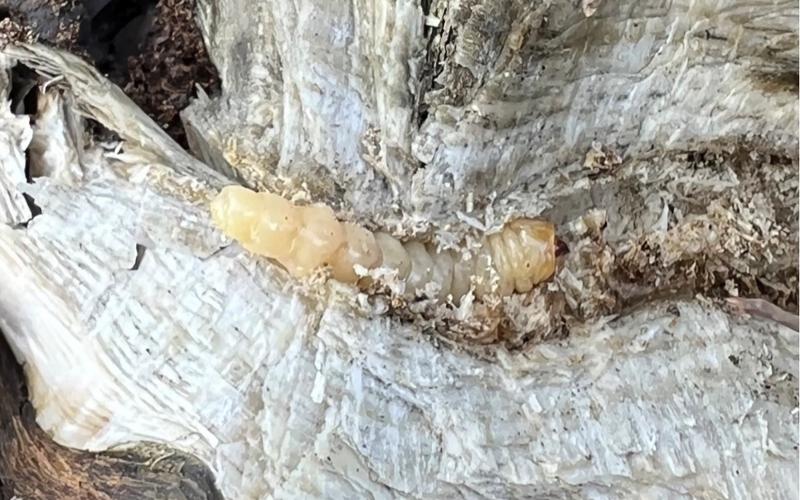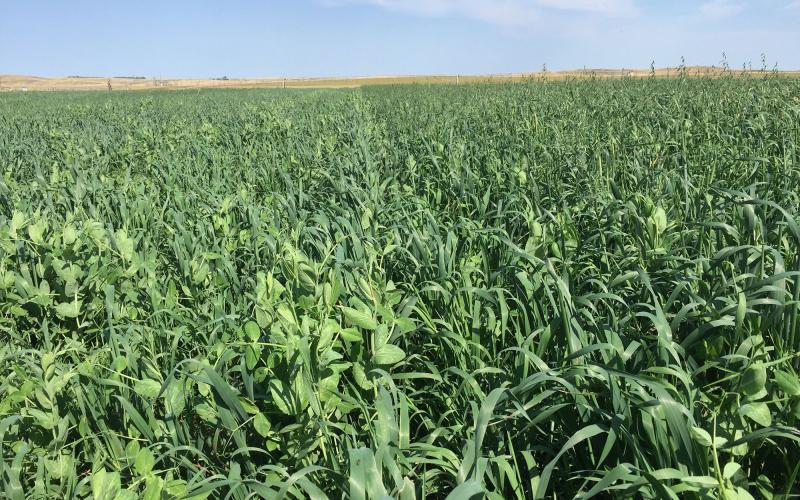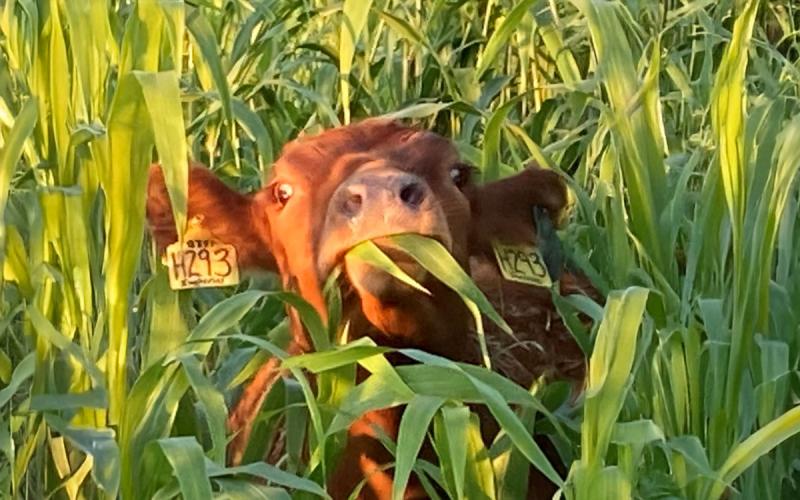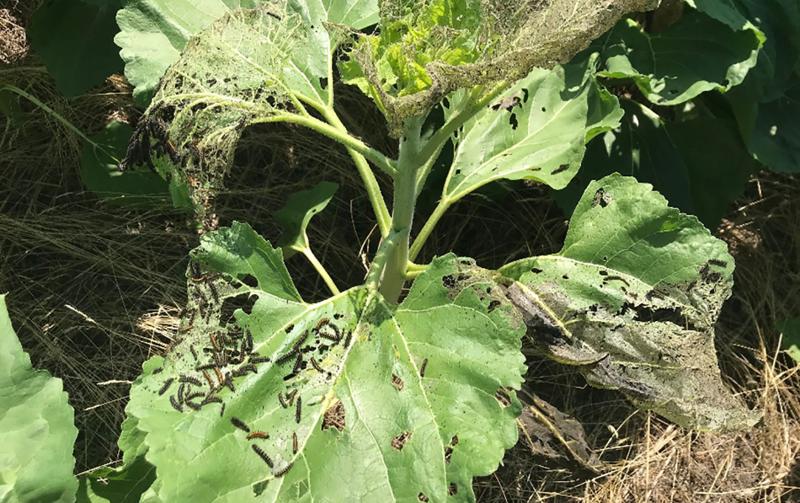
While scouting sunflower near Sturgis this week, we came across outbreak levels of checkerspot caterpillars that were defoliating the plants (Figure 1). Similar sightings have been reported throughout Western and Central South Dakota in recent weeks.
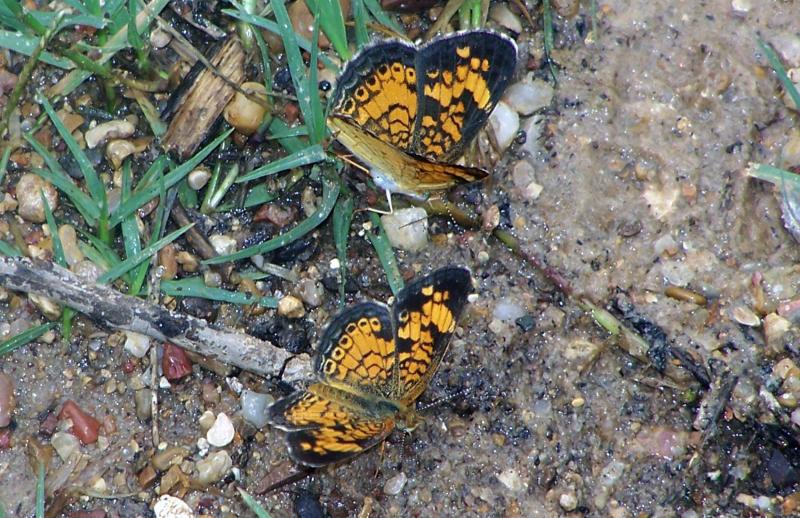
The caterpillars are the immature stage of the silvery checkerspot butterfly (Figure 2).
Their primary hosts are plants in the aster family, including sunflowers.
Identification
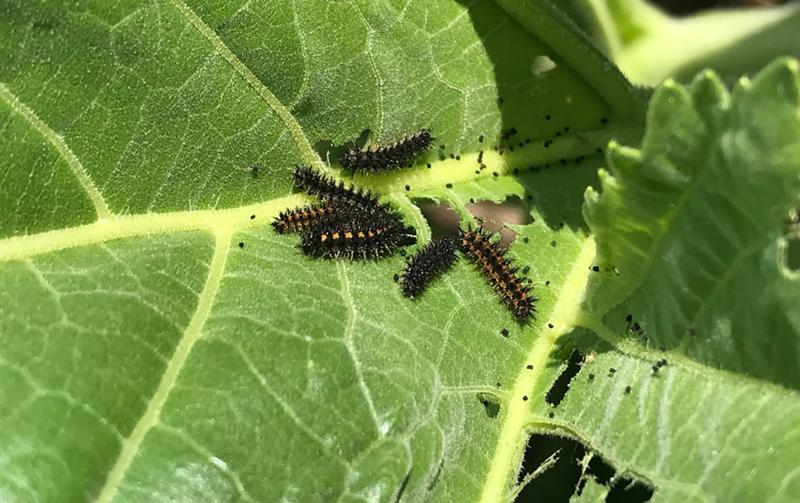
Checkerspot caterpillars have spines present on their body, giving them a prickly appearance (Figure 3).
They are mostly black and have yellow stripes that run down their sides.
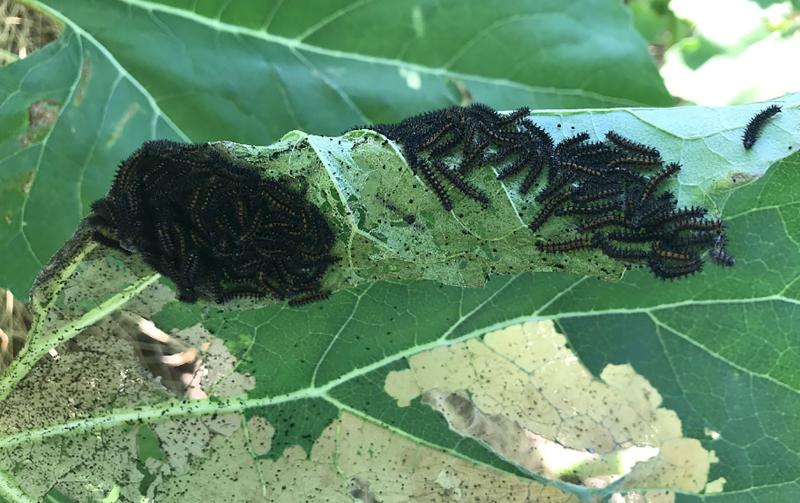
The size of checkerspot caterpillars depends on their age, but they may grow up to 1.5 inches in length.
The caterpillars initially feed in groups after hatching and will produce concentrated areas of frass or waste (Figure 4).
Scouting and Management
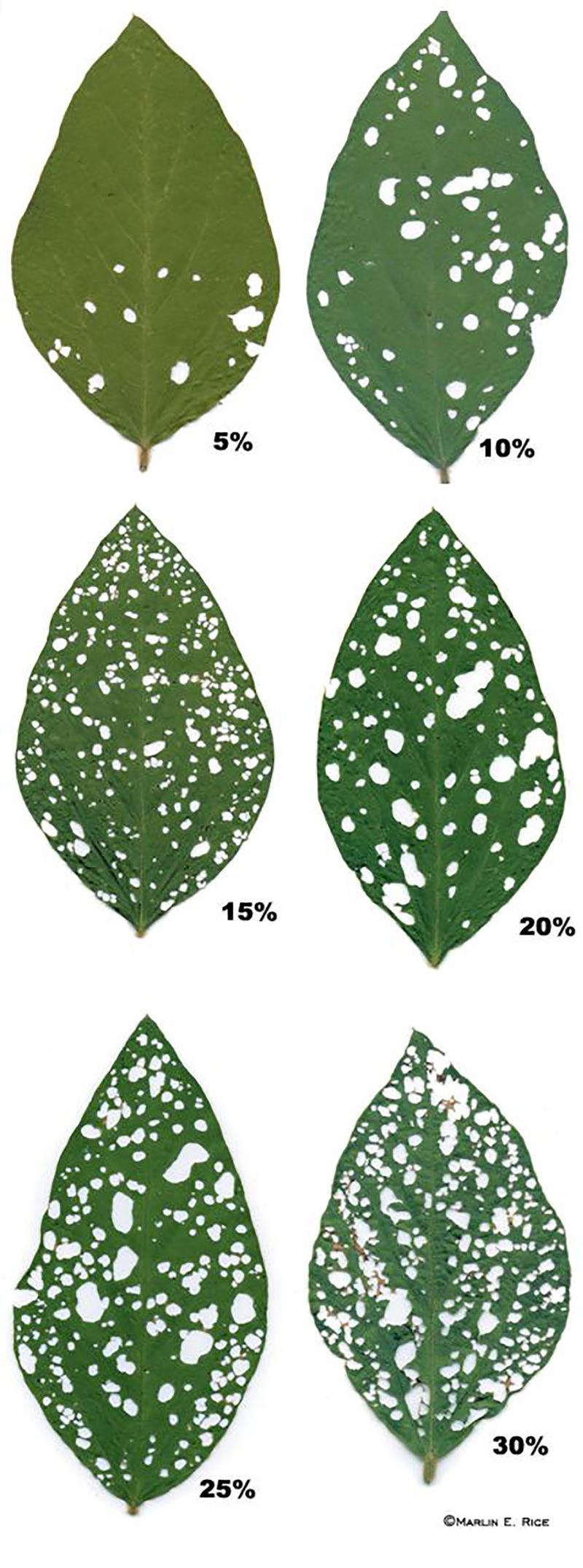
To scout for checkerspot caterpillars, check 10 random sunflower plants in an area and repeat the process in five different locations within a field. For each of the selected plants, evaluate the amount of defoliation that is present on the sunflower (Figure 5).
The threshold for sunflower defoliation is approximately 25% if most of the caterpillars are less than 1.25 inches long. If they are longer than 1.25 inches, management is unnecessary because, at that size, the caterpillars are nearly fully grown and most of the feeding damage has already occurred.
Depending on the size of an infestation, checkerspot caterpillars may be managed using spot spraying in areas where the defoliation is more severe (e.g., field edges). For a list of foliar insecticides that are labeled for management, please refer to thistle caterpillars in the current edition of the South Dakota Pest Management Guide: Alfalfa & Oilseeds.
